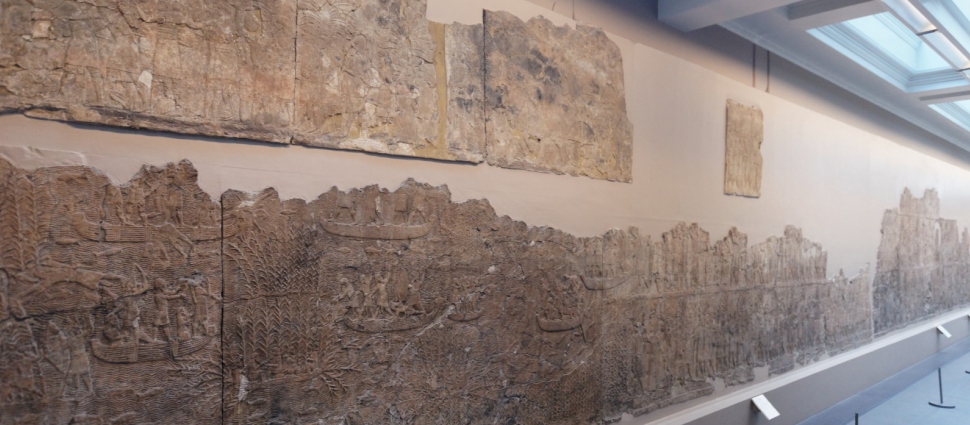The Case for Biblical Archaeology

John Currid, The Case for Biblical Archaeology (Phillipsburg: P&R, 2020). Paperback. 288 pp.
John Currid’s latest work does what the title advertises: The book provides an introduction to, motivation for, and even inspiration for would-be specialists in various fields of Biblical Studies to take up an interest in Biblical Archaeology. We should expect nothing less from the co-editor of the ESV Bible Atlas (Crossway, 2010) and the ESV Archaeology Bible (2017).
Biblical archaeologists may not live the kind of swashbuckling lives made famous by Indiana Jones. Nevertheless, those who hold that God really intervenes in history have taken a beating by critical scholars over the last 250 years or more. To this situation Currid’s work provides an extremely helpful antidote.
In an understated moment in his Introduction, Currid shows the intellectually satisfying kinds of consequences that can be at stake:
During the early years of the sixth century B.C., Judah came under the control of the Babylonians … most of the cities of Judah from this period that have been excavated contain destruction layers from the Babylonian invasion. Major sites, such as … Lachish have huge burn layers that reflect the devastation…
Most readers will be familiar with the broader details. But an excavation site southwest of Jerusalem, Lachish, holds key details to the progress of the invasion. Letters among various commanders have been found written on papyri at the site. One of the letters closes with Hoshaiah [a local Israeli commander] commenting to a superior: “And let (my lord) know that we are watching for the signals of Lachish, according to all the indications which my lord hath given, for we cannot see Azekah.” Currid's comment is worth quoting at length:
Hoshaiah was speaking about fire signals that would have been transmitted from one city of Judah to another, and the particular setting of this letter appears to be the advance of the Babylonian army through the Lachish region. Azekah, located about 12 miles north-northeast of Lachish, was apparently not sending signal fires and, therefore, was perhaps under siege or had been destroyed by the Babylonians.
The destruction layer at Lachish from the Babylonian attack has been exposed through archaeological investigation. Many scholars agree that the ash layer of Level II at the site reflects the attack of Nebuchadnezzar. The city gate was destroyed at this time, and its ash layer seals the occupation layer beneath it; that occupation layer contains the Lachish [papyri] ….
One of the letters embedded in the destruction debris opens with a date, “In the ninth [year] …” This date should bring to mind 2 Kings 25:1, which says, “And in the ninth year of his reign [i.e., Zedekiah], in the tenth month, on the tenth day of the month, Nebuchadnezzar king of Babylon came with all his army against Jerusalem and laid siege to it …
This convergence of the biblical text and archaeology is not unique (pp 2-3).”
It is a small and probably unknown site to most Biblical readers. And yet, as Currid summarizes: “All the data—biblical, archaeological, and linguistic—come together to provide an accurate and helpful picture of what happened at Lachish during the destruction of Judah by the Babylonians.”
And the apologetic payoff, which he leaves to a footnote, is rich: "Source-critical scholars have a difficult time explaining such convergences (p. 3, fn. 5)."
While he is quite up-front in admitting that archaeology is “a limited tool” that “by no means exhaustive in what it provides (p. 5), the remainder of the work, it seems, is thick with similar “convergences”, although many of them will be less dramatic than this one.
The book is divided into three parts. Part 1 is a general introduction to both the land of the Bible and to the history of archaeology. It also provides an overview of the history of the archaeology of the area, and of the particular methodology used there: a “tell excavation”, a method that “investigates settlements that have been occupied repeatedly over extended periods of time”, primarily by investigating the various layers, or “strata” found in a particular area.
Part 2 explores Biblical Israel in more detail. It includes separate chapters on each of the most important archaeological sites in the various regions, including Galilee, the Jezreel Valley, Megiddo, the Negev region, Beersheba, the Shephelah region, the Jordan River valley (including Jericho), the Southern coastal plains, and perhaps dozens of excavation sites in these regions. Where they are available, Currid provides biblical details such as those provided in the introduction.
Part 3 provides summary chapters on some of the things that have been learned about the areas that have been excavated, including information about farming (and water sources and management), architecture, burial practices, and even the Hebrew language.
The Church of our era has rarely seen so knowledgeable and scholarly defender who has provided a more useful, yet humble and patient apologetic than John Currid. It is fitting that Currid devoted this book to his own students; The Case for Biblical Archaeology seems to me to be a thorough appeal for younger Biblical scholars either to consider archaeology as a field of study for themselves, or at the very least, keep archaeology and its conclusions as a part of the work that they do as a way of complementing their analyses in their chosen Biblical Studies fields.
In a world that is simultaneously moving away from Biblical thought and values, all the while thinking itself more knowledgeable and sophisticated, Currid’s The Case for Biblical Archaeology is a clarifying and eye-opening work.
John Bugay is a member of City Reformed PCA in Pittsburgh, PA. He is a long-time marketing automation professional and blogger.
Related Links
The Case for Biblical Archaeology by John Currid
"The Old Testament's Message to Our Culture" by David Murray
"The Apologetics of Christian Solidarity" by Bruce Baugus
"The Troublesome Doctrine of Biblical Authority" by Scott Redd
Defending the Faith with Gabriel Fluhrer
Histories and Fallacies: Problems Faced in the Writing of History by Carl Trueman




